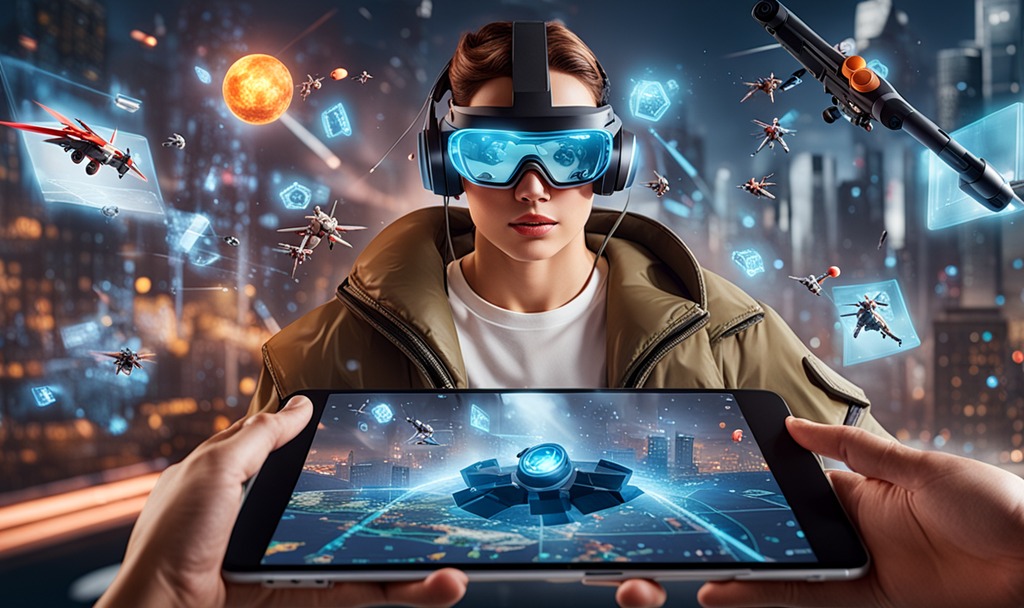Augmented Reality (AR) games have captivated audiences worldwide, blending the digital and physical realms seamlessly. From the groundbreaking success of Pokémon GO to the promising advancements of next-generation experiences, the journey of AR gaming is an exciting tale of innovation and immersion.
Pokémon GO: A Game-Changing Phenomenon
Pokémon GO, developed by Niantic, revolutionized the gaming landscape upon its release in 2016. Leveraging AR technology and GPS tracking, the game allowed players to explore the real world while encountering and capturing virtual Pokémon. Its blend of nostalgia, social interaction, and outdoor exploration sparked a global phenomenon, with millions of players venturing outside to catch ’em all.
Pokémon GO’s success was not merely in its gameplay mechanics but also in its ability to foster community engagement. Parks, landmarks, and public spaces became bustling hubs of activity as players gathered to battle in gyms, participate in raids, and exchange tips. The game’s augmented reality feature, which superimposed Pokémon onto real-world environments through the smartphone camera, added a layer of immersion that was unprecedented at the time.
The Rise of Location-Based AR Experiences
Following the success of Pokémon GO, developers began exploring new possibilities within the realm of location-based AR gaming. Games like “Harry Potter: Wizards Unite” and “Jurassic World Alive” adopted similar mechanics, encouraging players to explore their surroundings to discover magical artifacts or encounter augmented dinosaurs.
These games expanded on the foundation laid by Pokémon GO, introducing more complex gameplay elements such as spellcasting, creature breeding, and player-versus-player battles. The integration of beloved intellectual properties also contributed to their appeal, leveraging existing fan bases to drive engagement and retention.
Next-Gen AR: Pushing the Boundaries of Immersion
While location-based AR experiences continue to thrive, the next frontier of AR gaming lies in pushing the boundaries of immersion and interactivity. Advances in technology, such as improved depth sensing, object recognition, and spatial mapping, have enabled developers to create more sophisticated AR experiences with greater realism and depth.
One notable example is Microsoft’s HoloLens, an AR headset that overlays holographic images onto the user’s field of view. While primarily targeted at enterprise applications, the HoloLens showcases the potential for immersive AR gaming experiences beyond the limitations of smartphones. Imagine battling virtual monsters in your living room or solving puzzles that interact with your physical environment in real-time.
The Future of AR Gaming: Blending Realities Seamlessly
As technology continues to evolve, the lines between the digital and physical worlds will blur even further, ushering in a new era of seamless AR gaming experiences. From augmented reality glasses to wearable devices that integrate seamlessly into our daily lives, the future holds endless possibilities for immersive gameplay.
Imagine a world where AR-enhanced theme parks offer interactive adventures, or where historical sites come to life through augmented storytelling. With advancements in AI, machine learning, and computer vision, developers will have the tools to create rich, dynamic worlds that respond intelligently to user actions and environmental cues.
In conclusion, the evolution of AR gaming from Pokémon GO to next-gen experiences represents a journey of innovation, creativity, and technological advancement. As we look to the future, the potential for AR to transform how we play, interact, and experience the world around us is limitless. Whether exploring virtual realms or engaging in real-world adventures, the allure of augmented reality gaming continues to captivate audiences worldwide.
